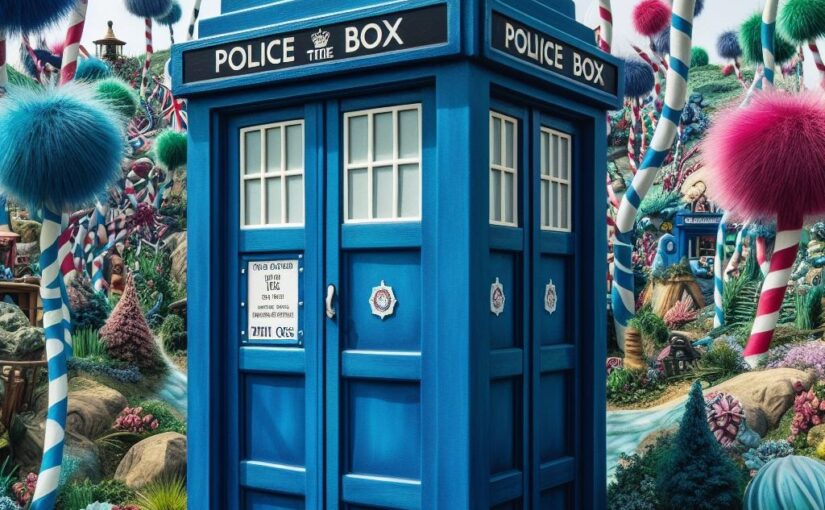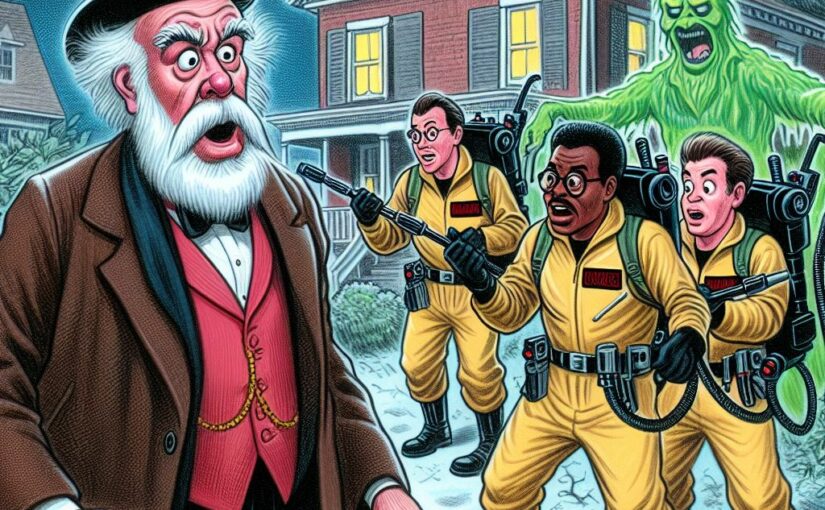Once upon a time in the heart of London, the Ghostbusters faced a peculiar case that went beyond their usual spectral encounters. Late one cold and foggy Christmas Eve, the call came in from none other than Ebenezer Scrooge himself. The notorious miser and tight-fisted old man had a ghost problem that even he couldn’t ignore.
Always up for a challenge, the Ghostbusters quickly assembled their proton packs and headed to Scrooge’s gloomy mansion. They were greeted by the elderly man with a mix of skepticism and desperation.
“Ghostbusters, you say?” Scrooge grumbled. “I don’t believe in such nonsense, but these spirits won’t leave me be! They’re ruining my business and haunting my sleep. I demand you rid me of them!”
Undeterred by Scrooge’s skepticism, the Ghostbusters thoroughly investigated the mansion. The air was thick with the presence of otherworldly entities, and the team soon realized that these weren’t just ordinary ghosts. They were the spirits of Christmas Past, Present, and Future – the very apparitions that had visited Scrooge the night before.
Dr. Peter Venkman, always the one with a quick wit, remarked, “Looks like someone had a Dickens of a night, huh?”
As the Ghostbusters delved deeper into the spectral mystery, they discovered that the spirits were trapped in a temporal loop, repeatedly replaying the events of Scrooge’s transformation. The team knew they had to break the cycle to free Scrooge and the restless spirits.
With a combination of scientific prowess and a touch of holiday magic, the Ghostbusters devised a plan. Using their proton packs, they synchronized their energy emissions to disrupt the temporal loop. The spirits were temporarily halted as the beams of energy intertwined, and the team entered the ethereal realm.
In a surreal landscape that mirrored Scrooge’s memories, the Ghostbusters encountered each spirit separately. With their scientific know-how, they convinced the Ghost of Christmas Past, Present, and Future to release their hold on Scrooge. As the temporal loop unraveled, the spirits faded away, leaving a sense of peace behind.
Back in the real world, Scrooge couldn’t believe his eyes as the apparitions disappeared. He stood in his mansion, surrounded by the Ghostbusters and a newfound warmth in his heart.
“Thank you,” Scrooge whispered, his once-icy demeanor melting away. “I never thought I’d say this, but Merry Christmas, Ghostbusters!”
The Ghostbusters tipped their proton packs in acknowledgment and left the transformed Scrooge to enjoy the rest of his Christmas Eve. As they exited the mansion, the team shared a moment of satisfaction, knowing that they saved Scrooge from his ghostly predicament and brought a little more joy to the world on that magical Christmas night.
Like this:
Like Loading...


